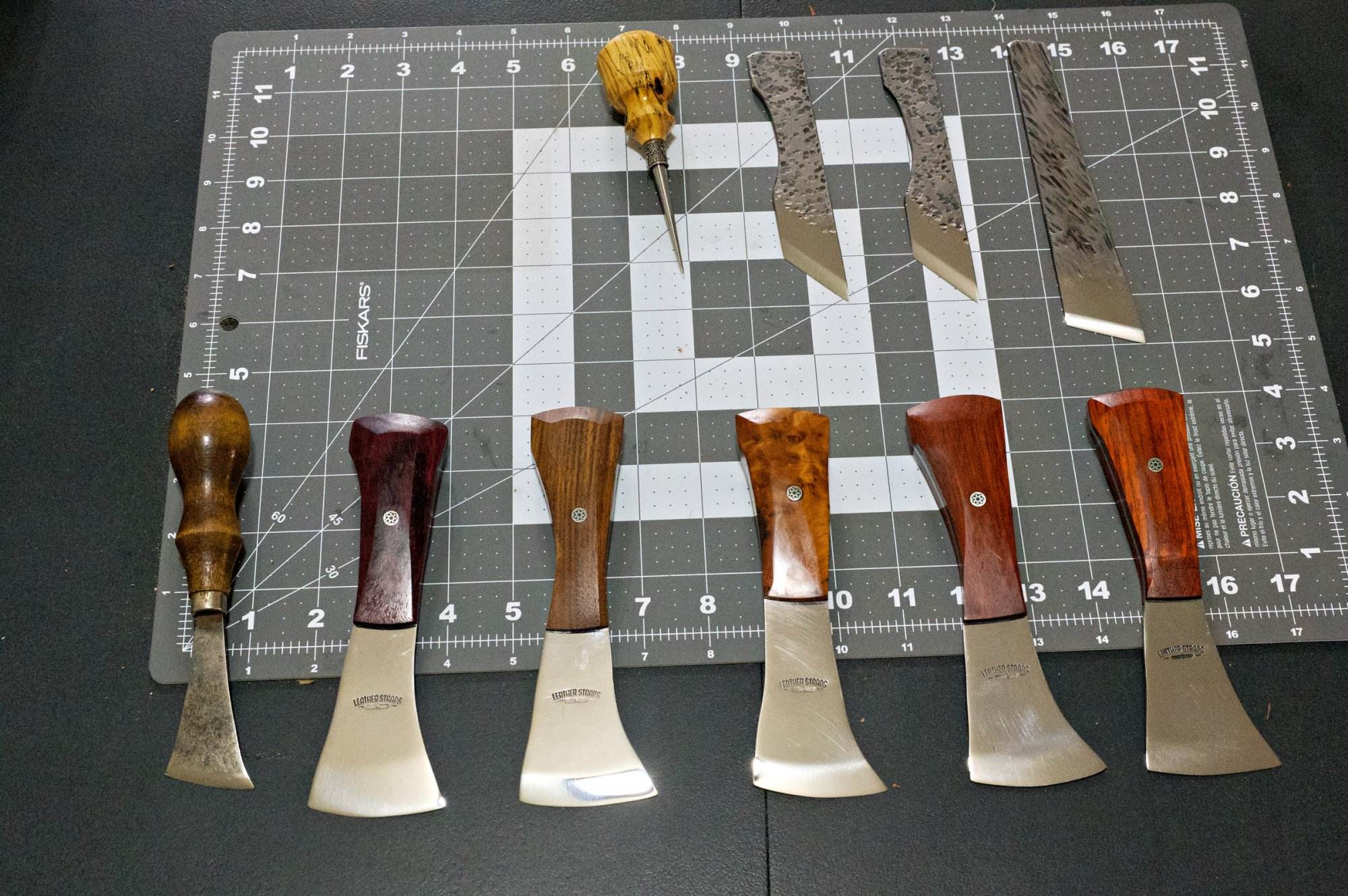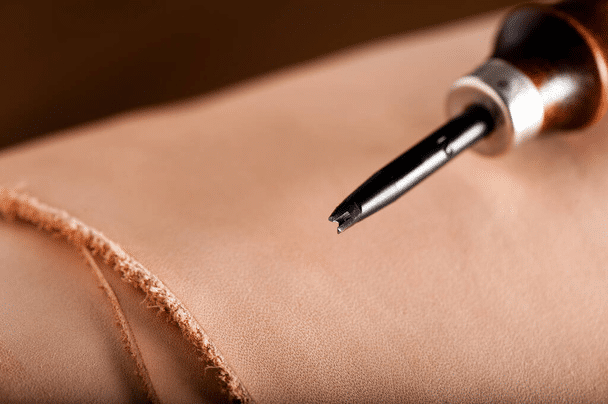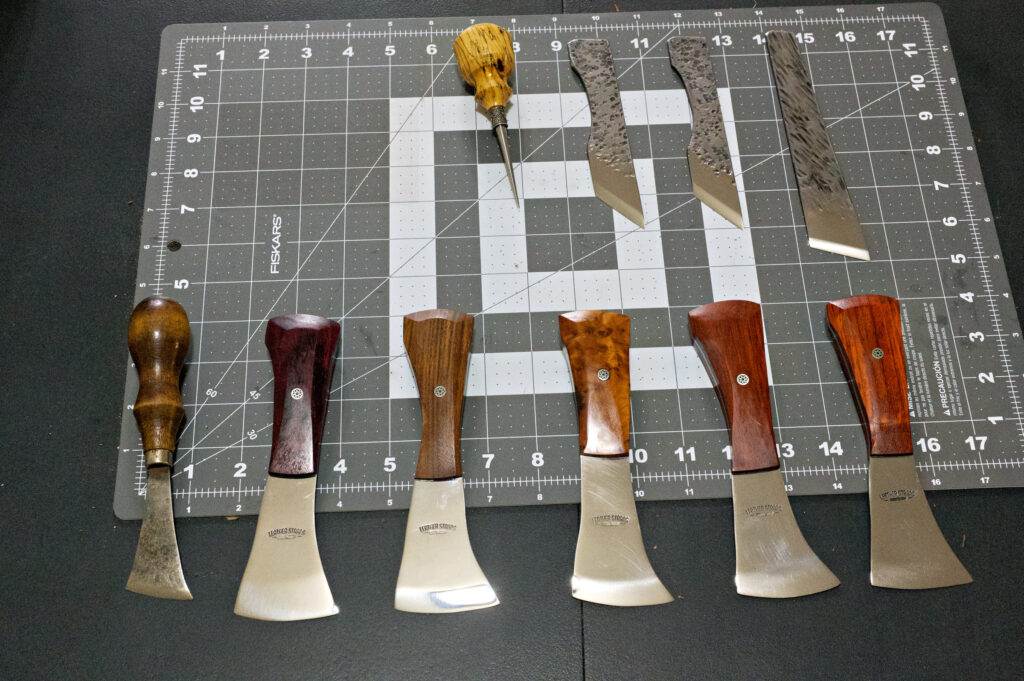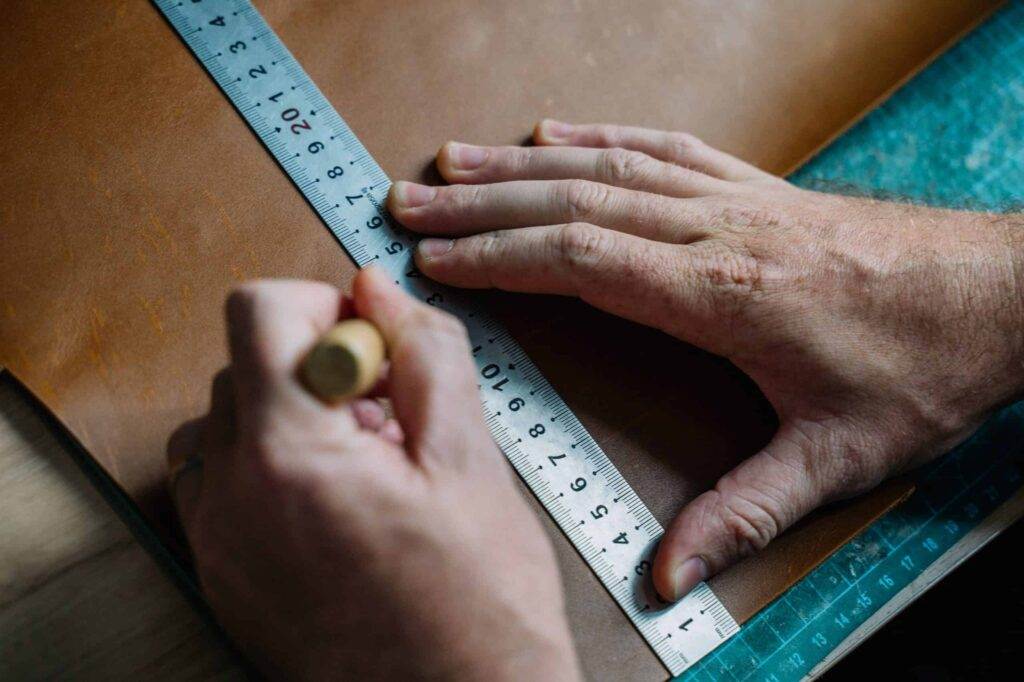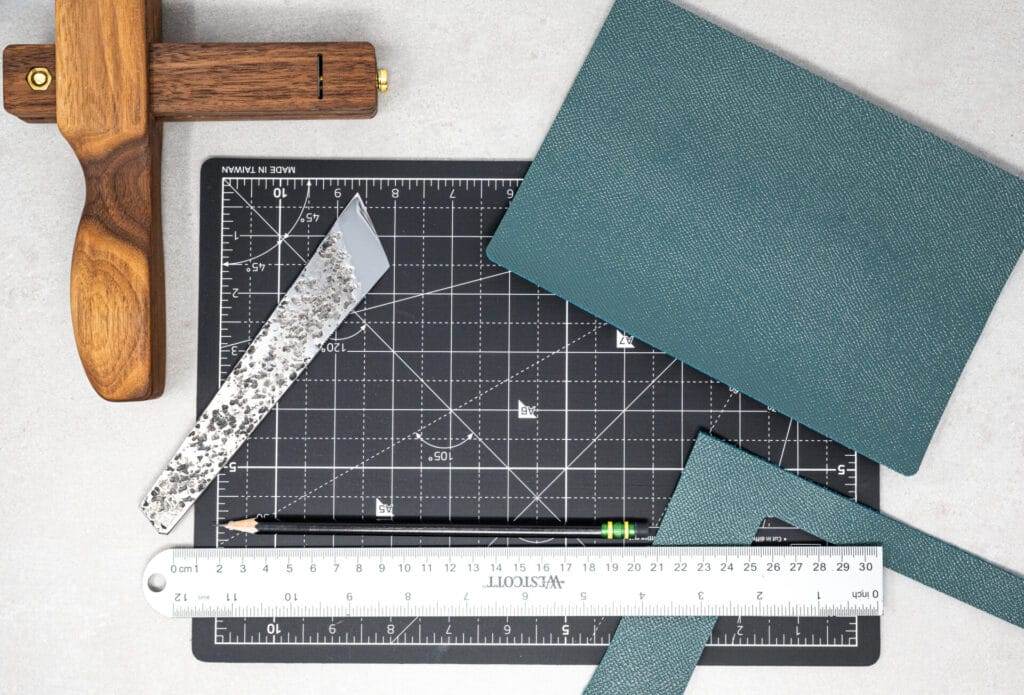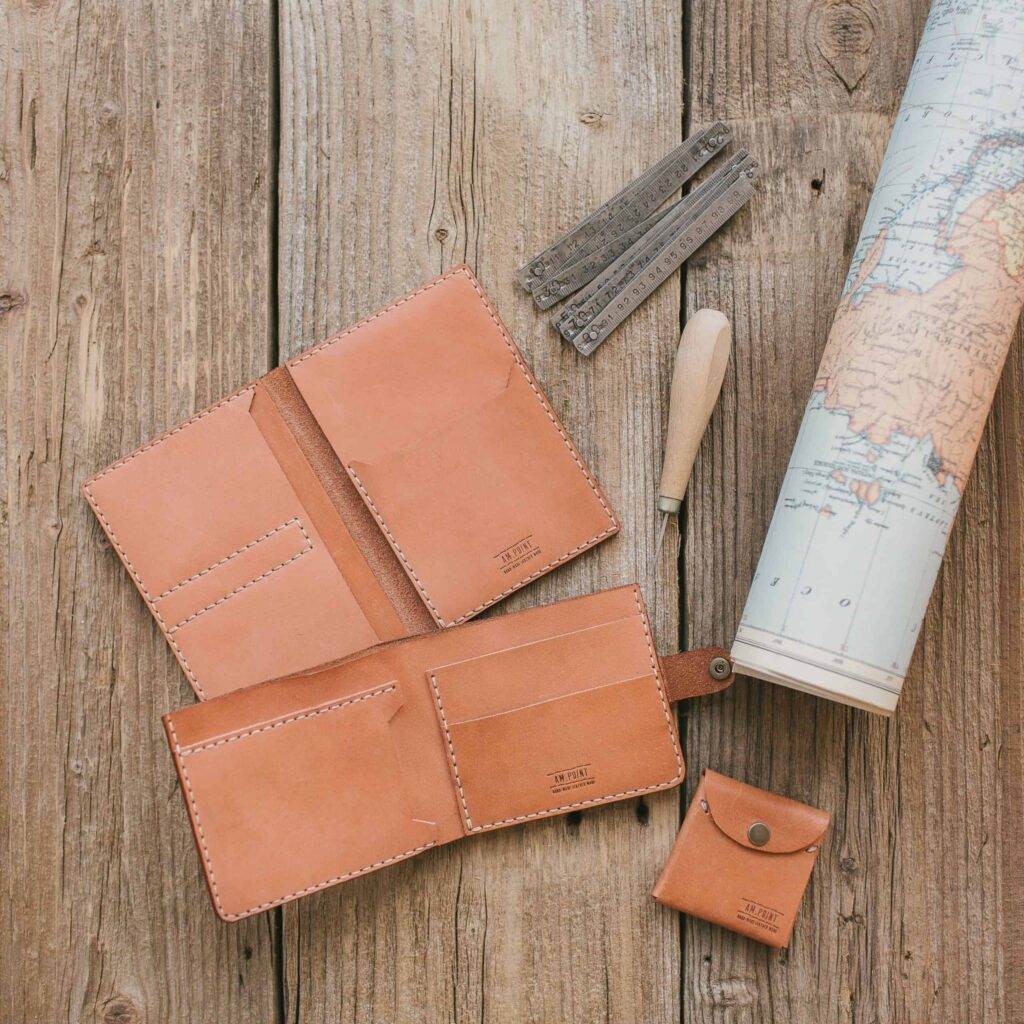Effective Techniques for Removing Rust from Carbon Steel Leathercraft Knives and Tools
Understanding Rust on Carbon Steel Leathercraft Knives and Tools
Rust formation on carbon steel leathercraft knives and tools is a common concern for every craftsman. The unwanted red-orange flaky substance is a natural occurrence that mostly happens when iron meets water and oxygen. Not addressing this problem can lead to serious effects on the tool’s functionality and lifespan.
Causes of rust on carbon steel
As you know, rust is an iron oxide that forms when iron (present in steel), oxygen, and moisture combine – a process known as oxidation. Leathercraft knives and tools made of carbon steel are susceptible to rust as they possess high contents of iron. Leaving these tools exposed to humid conditions or moisture accelerates this rusting process.
Effects of rust on leathercraft knives and tools
Rust is problematic for carbon steel tools, especially those used in delicate crafts like leathercraft. It not only affects the aesthetic of the tools but also their performance. Specifically, rust can cause pitting on the surface, reducing the tool’s sharpness and can also weaken its structural integrity over time. A rusty tool is not only less efficient but can also compromise the quality of your work.
Maintaining these tools well and taking steps to prevent or remove rust from carbon steel leathercraft knives and tools is therefore absolutely essential.
Here’s a table for quick understanding:
| Factor | Explanation |
|---|---|
| Causes | Rust on carbon steel tools is formed due to oxidation. Leaving these tools exposed to moisture fastens the rust process. |
| Effects | Rust can cause pitting on the tool surface, reduces its sharpness, and can weaken its structural integrity over time. |
Preparing the Tools for Rust Removal
Facing trouble with rust on your carbon steel leathercraft knives and tools? The wear-and-tear posed by rust might lead to tool failure. Thus, the efficient removal of rust not only ensures good aesthetics but can also promptly restore the functionality of your tools.
Cleaning the knives and tools before removing rust
1.Initial Cleaning: Start with a basic cleaning using warm, soapy water to remove loose dirt or grease. Don’t hesitate to use a toothbrush or small brush to reach those tricky corners.
2.Dry them Properly: Always ensure to dry your tools completely after cleaning. Lingering moisture can encourage further rusting.
Determining the severity of the rust
Analyze the Rust Degree: It’s essential to evaluate the severity of the rust to apply the proper treatment. For mild rust, fine steel wool or sandpaper can be enough to clear the rust. On the other hand, stubborn and extensive rust might call for a stronger rust remover product.
Remember, your upkeep efforts keep your tools in excellent shape for years. So stay consistent and watch your tools shine like new!
Manual Rust Removal Techniques
In the realm of leathercraft, the instances of rust on carbon steel knives and tools could be a common issue. But worry not as it’s possible to keep these tools pristine with easy-to-follow rust removal practices.
Using steel wool and sandpaper to remove rust
Venturing on a DIY mission, one can successfully eliminate rust using steel wool and sandpaper. Begin this process by rubbing off the rust gently using a piece of steel wool. Don’t forget the nooks and tight spots. For cases of stubborn rust, do not shy away from using medium-grit sandpaper. Regularly wipe away the residue and keep going until all the rust is removed.
Applying rust dissolver and scrubbing with a wire brush
Alternately, one could opt for commercial rust dissolvers such as Evapo-Rust or WD-40 Specialist Rust Remover Soak. Apply the rust dissolver on the tool, wait for prescribed time, then start scrubbing off the rust with a wire brush. Rinse the tool and dry it properly to prevent further rusting.
In essence, rust removal is an effortless process that helps lengthen the life-span of your leathercraft tools, keeping your creations shining as new. Taking preventative measures such as regular cleaning, oiling, and appropriate storage can significantly prevent rust build up. Embrace these techniques to maintain and enjoy enhanced durability of your cherished leathercraft tools.
Chemical Rust Removal Techniques
Efficiently removing rust on carbon steel Leathercraft knives and tools might seem like a daunting task. But don’t worry! It doesn’t have to be! Knowing the right and safe techniques can save your precious tools from rust’s nefarious grasp and extend their lifespan.
Using vinegar or citric acid for rust removal
Vinegar is your best friend when it comes to dealing with rust. The acid in vinegar dissolves rust, making it easy to wipe off with a cloth. Alternatively, citric acid, commonly found in citrus fruits, is also a great solution against rust. The method is simple – soak your tools in a mixture of citric acid and water, then scrub off the rust with a scrubbing brush. Always remember, after treating your tools with acid, neutralize the acid with water and baking soda to prevent further corrosion.
Applying commercial rust removers and following manufacturer instructions
Commercial rust removers offer a fast and efficient solution to removing rust. Such products are specially designed to deal with rust and will ensure your tools return to their shiny, original state without damaging the material. Always follow the manufacturer’s instructions to avoid unexpected outcomes like escalating the rust or harming the tool. Once applied, you’ll need to wash the tools thoroughly and lubricate them to prevent future rusting.
Using these strategies, you can keep your carbon steel Leathercraft knives and tools in top-notch condition for years to come.
Preventing Future Rust on Carbon Steel Leathercraft Knives and Tools
Every craftsman understands that well-maintained tools improve efficiency and give optimum results. Their carbon steel leathercraft knives and tools are no exception. Despite this understanding, tools sometimes get neglected and, over time, rust begins to form. Neglect no more; here are proven techniques to prevent future rust on your leathercraft knives and tools.
Proper storage and maintenance techniques
Stay Dry: Moisture is the number one cause of rusting. These wise craftsmen ensure their tools are dried before storing them away in dry and moisture-free conditions.
Good Condition: Regular cleaning and sharpening of knives and tools help keep them in peak condition. Cleaning removes grime and dirt that can trap moisture while sharpening removes tiny metal fragments that may rust.
Applying protective coatings and rust inhibitors
Use Rust Inhibitors: Treating tools with commercial rust inhibitors extends their lifespan. They do this by creating a protective surface layer that drastically slows down the rusting process.
Oil Coating: Carbon steel leathercraft knives also benefit significantly from being coated with lightweight oil. The oil acts as a barrier, preventing oxygen and moisture from reaching the tools’ surfaces.
By implementing these strategies, your beloved leathercraft knives and tools can stay rust-free and in pristine condition for longer. Moreover, treating your tools right translates to less time and money spent on replacements. They will continue to serve you efficiently for years to come.
Conclusion
Having tools free of rust extends their lifespan and maintains their efficiency. Carbon steel leathercraft knives and tools, while robust and efficient, are prone to rusting. But worry not, there are effective strategies to restore their previous glory.
Summary of effective rust removal techniques
Several practical techniques work perfectly on carbon steel leathercraft tools. Using common household products like vinegar, baking soda, or lemon juice can effectively remove rust. For those who prefer commercial options, rust converter, which converts rust into a protective black coating, comes in handy. Other options include sandpaper, steel wool or wire brush for scrubbing off the rust.
Tips for maintaining rust-free leathercraft knives and tools
Maintaining a rust-free tool set requires consistency in preventive measures. Lubricating the tools with oil, storing them in a dry place and cleaning after every use goes a long way in keeping rust at bay. For leathercraft knives, regular stropping not only keeps them sharp but also rust-free.
Frequently Asked Questions
Recognize that the journey to rust-free tools won’t be without challenges. Some frequently asked questions include queries on the safest methods, most efficient formulas, and at-home solutions. Don’t shy away from seeking advice from professionals or fellow tool users. In the end, rust-free tools equal more effective work.

